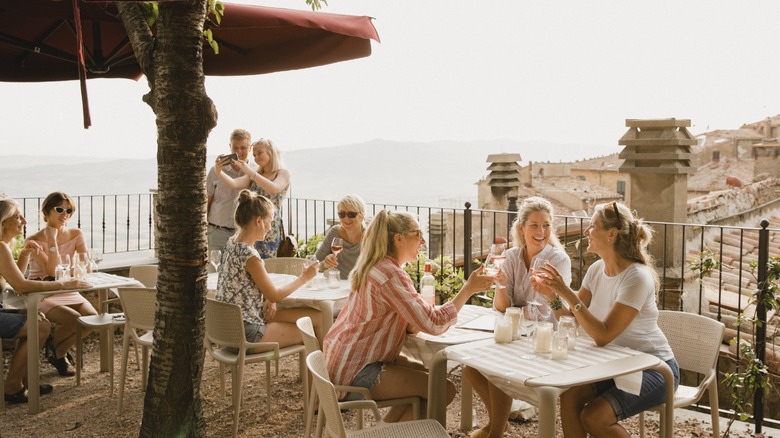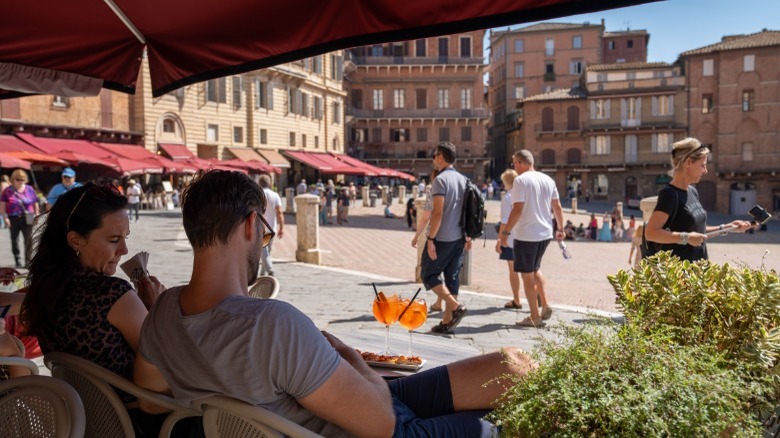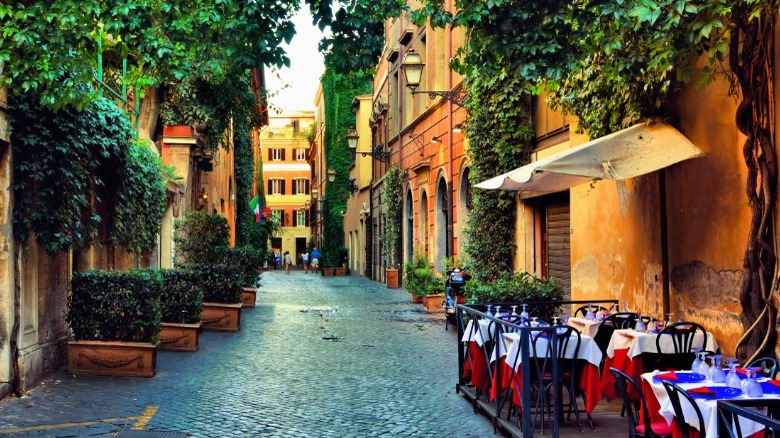What Is Italy's Coperto Restaurant Charge Actually For?
If you've been to Italy, you may have been so overwhelmed by how incredible every pasta dish and glass of wine was that you didn't even notice that extra charge on your bill at the end of your meal. And if your entire receipt is in Italian, that might make it even harder to distinguish "coperto" from the rest of your food if you're not a native speaker. But, a coperto or coperti charge on receipts in Italy is actually fairly common.
"Coperto" translates to "covered" in English, and is typically a charge per person that "covers" things like the bread and oils on the table, salt and pepper, and even table linens, plates, and silverware. The coperto charge could range anywhere from one to three Euros per person, so it's not that big of an extra expense in the long run. Coperto is different from a "servizio" or service charge, which is basically an added expense that could potentially be tacked on to your bill if you're dining with a large group of people. This is like a tip, but mandatory — the same way gratuity will be applied to bills in the states for large parties.
Don't be surprised if you see coperto
Weren't expecting to have to pay extra charges or tips in Italy? Technically, coperto isn't a tip; it's a non-negotiable charge meant to cover the cost of other aspects of the Italian dining experience. Sometimes, you'll also see it appear on the bill as pane e coperto, which, along with the silverware, is inclusionary of the bread you may have received with your meal. The menus you'll encounter in restaurants in Italy should say something about coperto — but keep in mind it could be in the fine print where you and the other tourists are unlikely to see it.
In the other regions, coperto is a comfort-related tradition that could date back to the Middle Ages — travelers who had their own food but needed lodging were expected to pay coperto for the use of things like indoor dining furniture or silverware. Travelers could reportedly sit outside for free, but to have the comforts of the indoors (and to be out of the weather), they had to pay the fee.
Are there any other money-related dining norms in Italy?
Like other countries in Europe, tipping is not common or expected in Italy, and not tipping isn't considered rude. Because waiters in Italy make a living wage, most people claim they only tip for truly amazing service or if they're dining at a fine dining establishment. If not leaving a tip makes you feel uncomfortable, you can always leave a couple of Euros or the change from your bill.
You should also note the bread charge you may see instead if you're planning on eating in Rome. Even if you don't actually eat any of the bread provided, you'll still be charged for it at the end of your meal. In Lazio — the region that includes Rome as well as Frosinone, Rieti, Viterbo, and Latina — it is illegal for restaurants to add a coperto. As a way for restaurant owners to get around the coperto law, they sometimes charge a fee specifically for bread. Because there are so many tourists trying to get their forks on Roman carbonara, most don't know that you have to refuse the bread outright if you don't want to eat it or pay for it.



